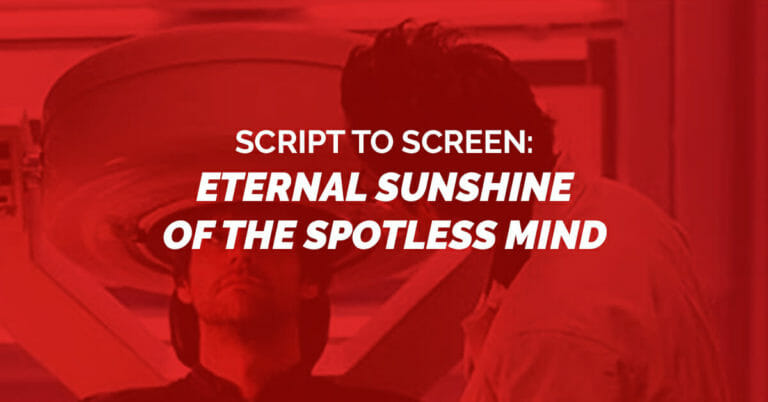By Jeff Legge · January 6, 2018

The offbeat, genre-defying antics of Charlie Kaufman have made him a rare beast in an increasingly risk-averse industry with a reputation for safe bets and reliable franchise fare. As original as it is structurally, narratively, and thematically challenging, Kaufman’s work is not easily summed up or reduced, which makes it antithetical to the majority of features coming out of Hollywood today.
And yet, for all his complexity and offbeat ideas, his best work remains immediately accessible for one simple reason: authentic, relatable emotion.
Nowhere is this accessibility more evident than in Kaufman’s script for Michel Gondry’s 2004 breakaway hit Eternal Sunshine of the Spotless Mind – a romantic dramedy of sorts bolstered by a surprisingly complex science fiction twist.
The plot itself teeters on the absurd, with Joel (Jim Carrey) undergoing a controversial medical procedure to erase all memories of his ex-girlfriend Clementine (Kate Winslet) after discovering that she has done the same to him.
Structurally, the film is a labyrinth on par with The Matrix or Inception, following Joel from memory to memory as he relives his relationship with Clementine before eventually regretting his decision to forget her.
And yet for all its complexity, Eternal Sunshine is never hard to follow. On the contrary, for all its abstract detours and mental loops, it’s incredibly easy to relate to Joel throughout his journey. The reason? Because we’ve all been there. We’ve all felt the sting of a bad breakup (or five), and found ourselves saddled with memories that we’d rather forget – if only in the moment. Kaufman understands this of course, and he smartly grounds the script’s more abstract elements in a central, immediately relatable human experience.
For an example of this in action, check out our latest script-to-screen breakdown, which features a scene plucked from near the end of the film:
Having forgotten each other entirely and subsequently reconnected, Joel and Clementine choose to begin a new relationship – even after learning the truth about their prior history.
It’s a simple scene with earnest, realistically flavored dialogue and cinematography that doesn’t take away from the two central performances. On the page, it’s no different, with sparse descriptions that allow the subtext of the scene to speak for itself. In fact, when viewed in isolation, the scene wouldn’t feel out of place in something like Before Sunrise or Annie Hall.
But while the situation driving the scene is strange, complex, and technically impossible, it offers an emotionally intriguing what-if scenario that is bound to resonate with anyone that has ever been in a relationship with another human being.
What would happen if we could choose to forget entirely about someone, only to meet them anew down the road? Would we connect in the same way? Would we make the same mistakes? Would the relationship be doomed from the start once more?
Like all great science fiction, Kaufman smartly chooses not to answer these questions. Instead, he opts to leave us with a hypothetical scenario that inspires reflection on an emotional level. One that encapsulates the film’s beating heart and ties together its central narrative arc: the relationship between Joel and Clementine.
For all the latest from The Script Lab, be sure to follow us on Twitter, Facebook, and Instagram.